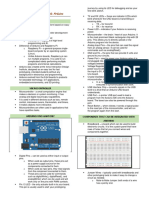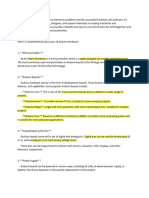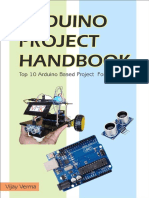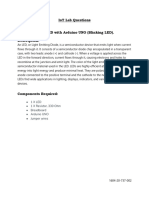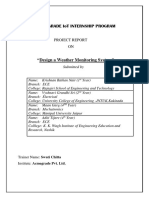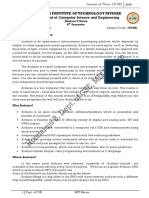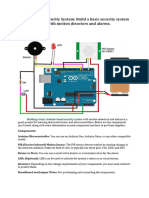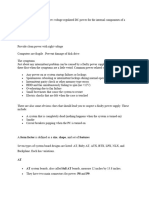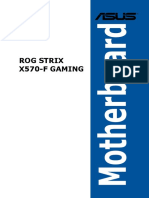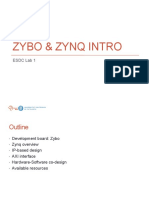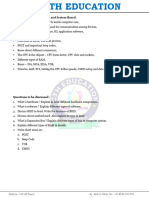Explanation and Working of Components
1. Arduino UNO
Details:
• Arduino UNO is a microcontroller board based on the ATmega328P chip.
• It has 14 digital pins (6 of which can be used as PWM outputs) and 6 analog input pins.
• Includes USB for programming and power supply.
• Has a clock speed of 16 MHz, and operates on 5V.
• Comes with an easy-to-use IDE (Integrated Development Environment) to write and
upload code.
How it works (Simplified):
• The board takes instructions (code) that you write in its IDE.
• It can read input from sensors (e.g., temperature or light sensors) and control devices (e.g.,
LEDs, motors) based on your code.
• For example, you can program it to turn on an LED when the temperature exceeds a limit.
2. 16x2 LCD with I2C
Details:
• A 16x2 LCD means the display has 2 rows and 16 columns, allowing up to 32 characters to
be displayed at a time.
• I2C (Inter-Integrated Circuit) reduces the number of pins required to connect the LCD to a
microcontroller from 16 to just 4 pins (VCC, GND, SDA, SCL).
• The I2C module uses an address to communicate with the microcontroller.
How it works (Simplified):
• The Arduino sends data (like text or numbers) to the LCD through I2C.
• The LCD displays this data in human-readable form.
• For example, it can show 'Temp: 25°C' and 'Humidity: 60%' based on sensor input.
3. DHT11 Sensor
Details:
• Measures temperature (0–50°C, ±2°C accuracy) and humidity (20–90% RH, ±5%
accuracy).
• Outputs data in digital form via a single pin.
• Works with a timing-based protocol to send 40 bits of data.
�How it works (Simplified):
• The sensor detects the temperature and humidity in the air.
• It sends this information to the Arduino as numbers.
• The Arduino processes the data and can display it on the LCD.
4. Artificial Neural Network (ANN)
Details:
• An ANN is a machine-learning model inspired by the human brain.
• It consists of layers:
- Input Layer: Receives data (e.g., temperature and humidity).
- Hidden Layer(s): Processes the data using mathematical functions.
- Output Layer: Gives the result (e.g., prediction or classification).
• Requires training with data to learn patterns.
How it works in your project:
• You used the DHT11 sensor to collect temperature and humidity data.
• This data was fed into the ANN as inputs.
• The ANN might have been trained to:
- Predict an environmental condition (e.g., 'High Risk of Plant Disease').
- Suggest actions (e.g., 'Water Required' or 'Ventilation Needed').
• After training, the ANN analyzed real-time sensor data and gave useful predictions.
















